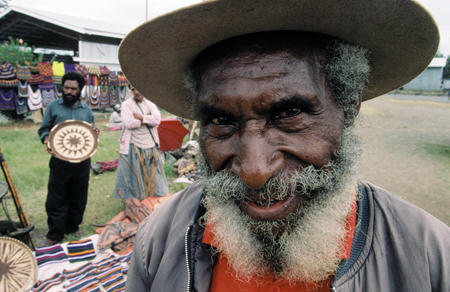 The whole of the picture area should be used in a balanced manner. Move around the subject or viewpoint to see how composition changes, and don't be afraid to go in close when the background is intrusive or adds nothing to the image. Crop tightly around the centre of interest and feel free to exclude any unwanted elements. However, when photographing people take care when cutting off limbs close to joints as the result may look awkward.
The whole of the picture area should be used in a balanced manner. Move around the subject or viewpoint to see how composition changes, and don't be afraid to go in close when the background is intrusive or adds nothing to the image. Crop tightly around the centre of interest and feel free to exclude any unwanted elements. However, when photographing people take care when cutting off limbs close to joints as the result may look awkward.
Balance can be achieved in a number of ways, and is not just a simple matter of balancing the visual weight of a couple of comparable elements. Asymmetrical equilibrium may be achieved by appropriate placement of secondary elements which balance the weight or impact of a single off-centre subject. The result may be effective tension felt throughout the image.
Unusual positioning of an element in the frame, for example a subject's eyes, may produce an unexpected quality as attention is drawn away to a corner or edge. When combined with strong lines and shapes, and implied lines such as those defined by a diagonal gaze, a powerful and dynamic composition is possible. Other lines, perhaps suggested by the landscape or the body of a human subject, can be used to create simple geometric shapes.
Using slide film is a good discipline because the composition work has to be done in-camera. If an image is later printed, use a mask cut from thin card to visualize how any cropping might look.






